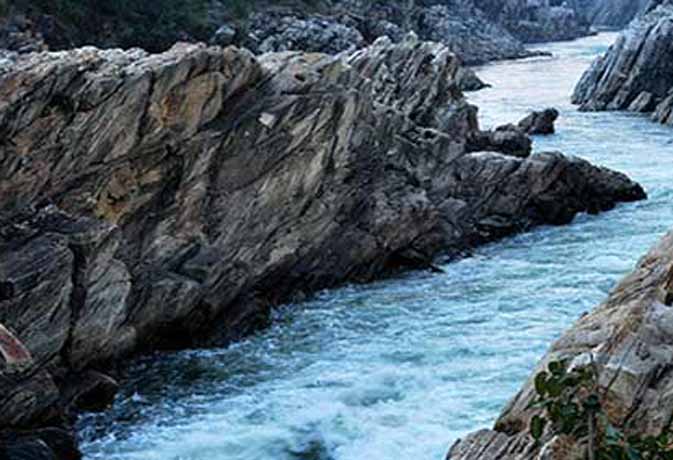The Narmada River flows in central India. If we talk about the longest river flowing inside India, then it is the third-longest river after Godavari and Krishna. This river is also known as Reva River. The Narmada is considered to be one of the holiest rivers of the country.
The Narmada originates from the plateau of Amarkantak in Anuppur district of Madhya Pradesh. This place is situated at an altitude of 3500 feet above sea level. After going about 8 kilometers from Amarkantak, this river forms the Dugdhara Falls and at a distance of 10 kilometers, it forms the Kapiladhara Falls.
The Narmada River forms a traditional border between North India and South India. It covers a distance of 1,312 km from east to west before falling into the Arabian Sea via the Gulf of Khambhat. The place is 30 km (18.6 mi) west of Bharuch city of Gujarat.

The unique feature of Narmada
The unique feature of Narmada is that it flows from east to west. In contrast, most of India’s rivers flow towards the east. It is also called the “lifeline of Madhya Pradesh and Gujarat” due to its vast contribution to the state of Gujarat and Madhya Pradesh.
The Narmada River flows through the fertile plains of alluvial soil known as “Narmadaghati”. This valley extends for about 320 km (198.8 mi). It is here that many important tributaries from the south come and join it, including the Shaar, Shakkar, Dadhi, Tawa (the largest tributary) and Ganjal. At the same time, important tributaries like Deer, Barna, Choral, Karam, and Lohar join from the north.
This river passes through a total of 4 states of India, Chhattisgarh, Madhya Pradesh, Rajasthan, and Gujarat. Eventually, this river goes westward and falls into the Gulf of Khambat. The Narmada River is the fifth-longest river in the Indian subcontinent.
Narmada River Length
The total length of this river is about 1310 km. The Maikal mountain starts from the summit of Amarkantak and falls in the Arabian Sea near the city of Bharuch in Gujarat.
Narmada River tributaries
The tributaries of this river are Shar, Shakkar, Dadhi, Badnera, Banjar, Tawa, Deer, Barna, Choral, Karam, and Lohar, etc.
Dam on the river
There are four main dams on this river, Maheshwar Dam, Indira Sagar Dam, Sardar Sarovar Dam, Ranipur Dam, etc.
Importance of Narmada River in Hinduism
There are 2 stories about the river Narmada in the Puranas.
First story: It is said that the Narmada appeared with the sweat of Lord Shiva sitting in penance. As soon as the Narmada appeared, she presented such miraculous pastimes with her supernatural beauty that Shiva-Parvati herself was astonished. Then he said while naming – Devi, you made our heart happy. That’s why your name is the Narmada. Soft means happiness and da mean giver.
Second story: Lord Shankar incarnated a 12-year-old celestial girl on Mount Maikhal because Vishnu and other deities named the Narmada to this girl because of being Maharupavati. This divine girl the Narmada performed penance for 10,000 divine years in the Panchakroshi area of Kashi on the banks of the Ganga, the Uttaravahini, and received some boons from Lord Shiva which is not near any other river.
Looking at the geographical location of the Narmada River, it can be said that this river is no less than a supernatural boon for Central India.
